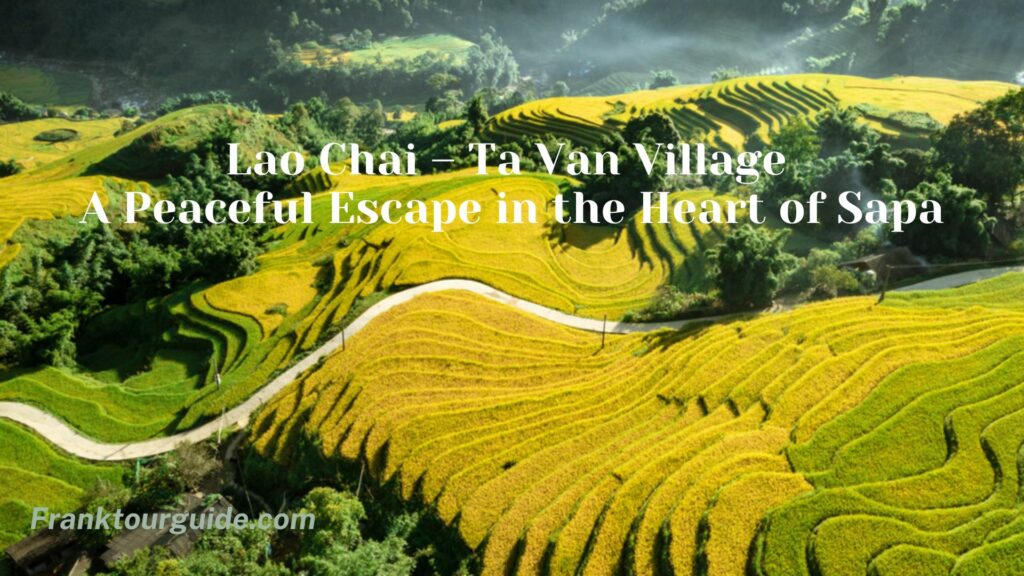Lao Chai Ta Van Village is among the most picturesque and authentic destinations you can visit on a Sapa tour. When people think of Sapa, the first images that often come to mind are golden rice terraces, misty mountains, and ethnic minority villages nestled deep in the valley. Located just 7–10 km from Sapa town, Lao Chai and Ta Van are home to the Black H’Mong and Giay ethnic minorities, offering visitors a unique chance to experience rich culture, stunning landscapes, and warm local hospitality.
Where Are Lao Chai and Ta Van Villages?
Lao Chai village lies at the foot of the Hoang Lien Son mountain range, with Ta Van village just a few kilometers further down the valley. The two villages are connected by a scenic trail, making them perfect for a leisurely trek as part of your Sapa tour. The Muong Hoa River flows gently between the rice terraces, reflecting the sky like a giant mirror, while the surrounding hills are blanketed with seasonal flowers and lush greenery.
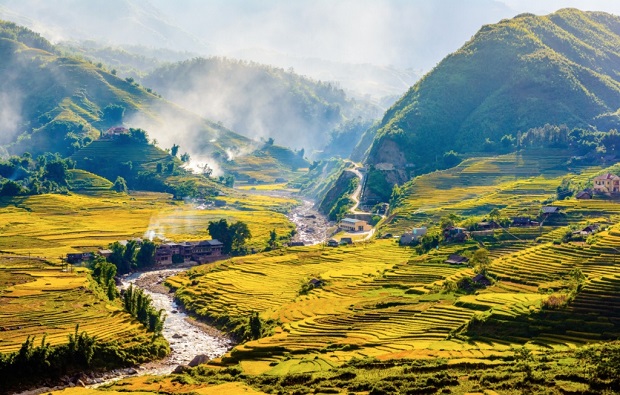
The Natural Beauty of Lao Chai and Ta Van
One of the most striking features of Lao Chai and Ta Van villages is their breathtaking Sapa rice terraces. In spring, the fields are filled with shimmering water, reflecting the clouds above. Summer turns them into lush green carpets, while autumn paints them in shades of gold, making it the most popular season for photographers.
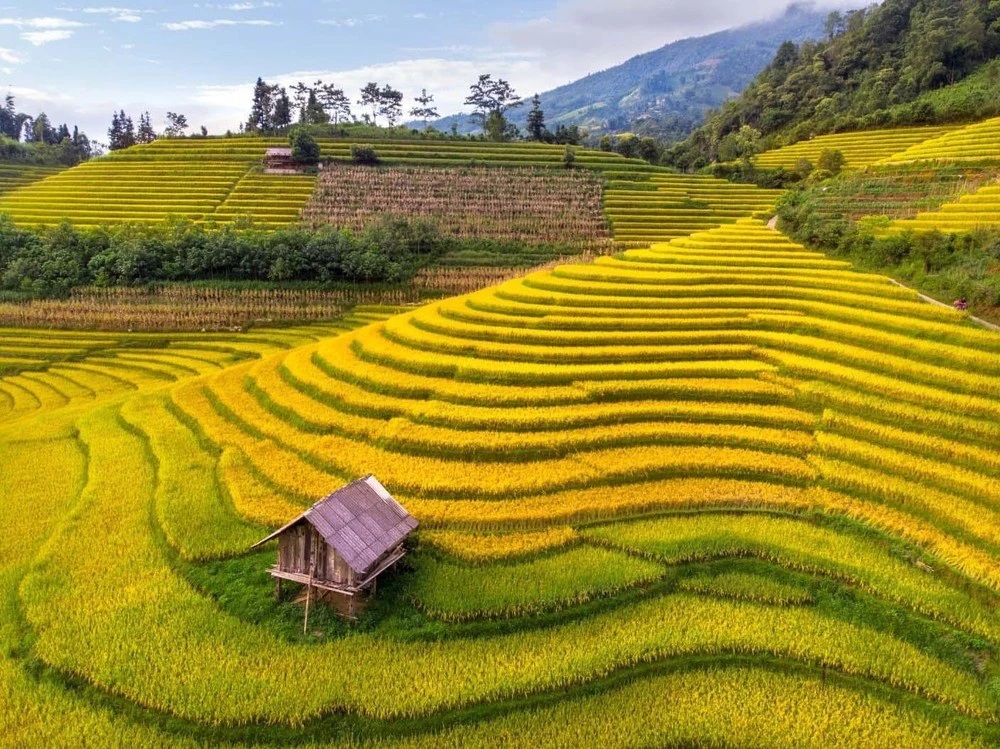
Beyond the rice terraces, visitors can admire the layers of mountains fading into the distance, often veiled in a gentle mist. The crisp mountain air, the sound of birds chirping, and the occasional laughter of children playing in the fields make every moment here feel like stepping into a postcard.
Cultural Experiences in Lao Chai – Ta Van
For travelers seeking more than just beautiful scenery, these villages offer a deep dive into the cultural tapestry of northern Vietnam. The Black H’Mong people in Lao Chai are known for their traditional indigo-dyed clothing and intricate silver jewelry. In Ta Van, the Giay ethnic group welcomes visitors with friendly smiles and delicious home-cooked meals.
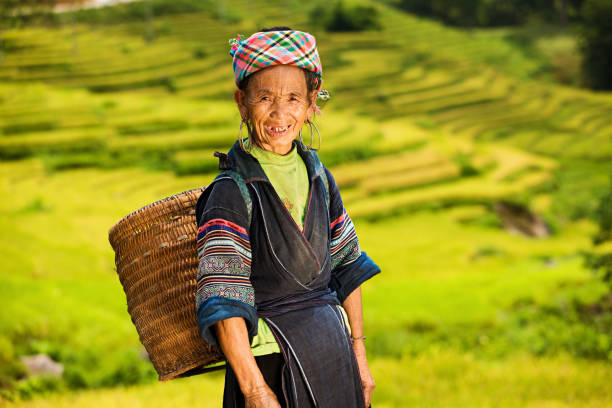
You can join a local family for lunch, taste freshly grown vegetables, and learn how to cook authentic dishes. You might even have a chance to take part in weaving demonstrations or try your hand at making traditional handicrafts.
Trekking Routes and Activities
The most popular way to explore Lao Chai and Ta Van is by trekking. Many Sapa tours include a guided trek starting from Sapa town, passing through Y Linh Ho village, Lao Chai, and ending in Ta Van. Along the way, you’ll walk on narrow paths between rice terraces, cross wooden bridges over small streams, and pass by water buffalo grazing lazily.
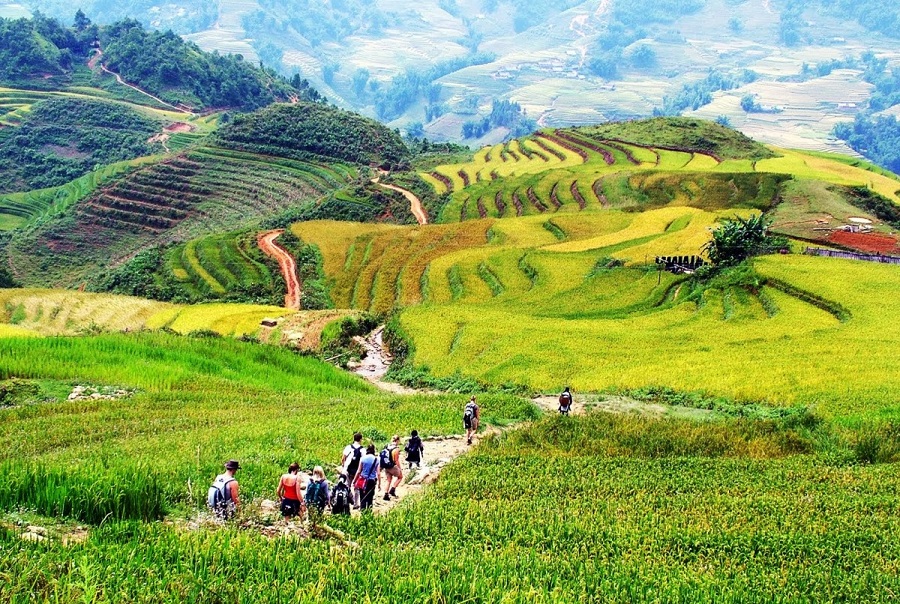
Other activities include:
-
Photography – Every turn offers a new, breathtaking view.
-
Cycling – Rent a bicycle and ride along the valley for a refreshing experience.
-
Homestay stay – Spend a night in a traditional stilt house and wake up to the sound of roosters and the sight of morning mist over the valley.
-
Local market visit – On certain days, nearby markets bustle with ethnic people selling vegetables, textiles, and handicrafts.
Best Time to Visit Lao Chai – Ta Van
The villages are beautiful year-round, but the best time to visit depends on what you want to see.
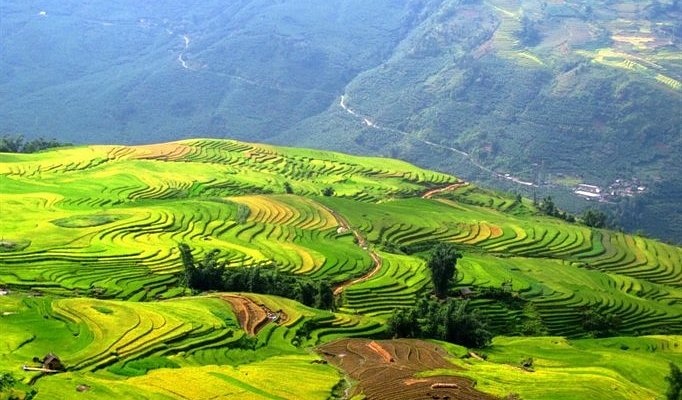
-
March to May – Warm, dry weather and blooming flowers.
-
June to September – Lush green rice terraces, perfect for nature lovers.
-
Late September to October – Harvest season, when the terraces turn golden.
-
December to February – Cold but atmospheric, with possible snow in high areas.
If you’re booking a Sapa tour, consider timing it to coincide with the harvest season for the most spectacular scenery.
See more: Best Time to Visit Sapa Vietnam: A Complete Seasonal Guide
Why Include Lao Chai – Ta Van in Your Sapa Tour?
While Sapa town offers comfort and convenience, Lao Chai and Ta Van allow you to truly experience rural life in the mountains. Here, you’ll find:
-
Unspoiled landscapes – Unlike crowded tourist spots, the villages retain their peaceful charm.
-
Genuine hospitality – Locals welcome guests like family.
-
Hands-on experiences – From farming to handicraft making.
-
A slower pace of life – A perfect escape from the city’s hustle.
These are the kind of places where you put down your phone, breathe in fresh mountain air, and feel connected to nature and people.
3 Day Sapa Trekking Tour – Best Nature & Culture Experience from Hanoi
Travel Tips for Visiting Lao Chai – Ta Van
-
Footwear – Wear comfortable trekking shoes, as paths can be muddy, especially after rain.
-
Local guide – Hiring a local guide enriches your experience and supports the community.
-
Cash – Bring small bills to buy souvenirs or food; there are no ATMs in the villages.
-
Respect local customs – Ask before taking photos of people and avoid entering houses uninvited.
-
Stay overnight – A homestay experience is the best way to fully enjoy village life.
How to Get There
From Sapa town, you can reach Lao Chai by motorbike, taxi, or as part of a guided trek. The road offers panoramic views of the valley and is an adventure in itself. Continuing from Lao Chai to Ta Van is easy, and you can choose to walk, cycle, or ride depending on your energy level.
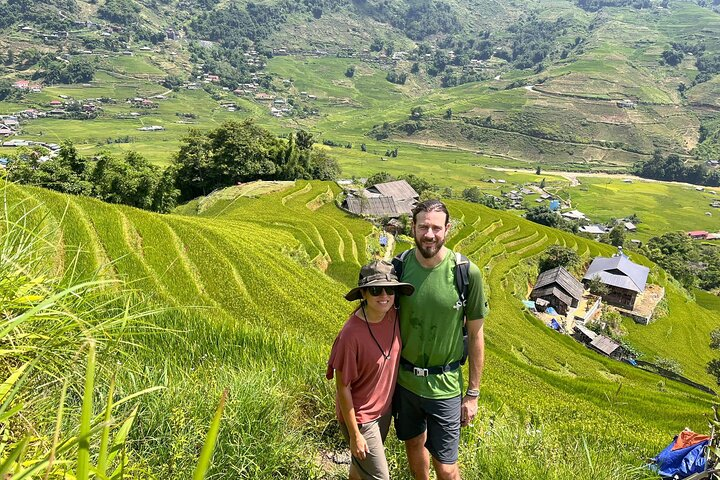
Conclusion
A visit to Lao Chai and Ta Van villages is more than just a stop on your Sapa 2D1N tour or Sapa 3D2N tour—it’s an unforgettable journey into the heart of Vietnam’s northern highlands. Here, nature and culture blend harmoniously, creating a destination that is as visually stunning as it is culturally enriching.
Whether you’re trekking through the rice terraces, enjoying a home-cooked meal with a local family, or simply standing still to admire the beauty around you, Lao Chai and Ta Van will leave you with memories that last a lifetime.
So, next time you plan your Sapa tour, make sure to set aside a day—or better yet, a night—in these peaceful villages. The charm of the valley, the warmth of its people, and the breathtaking landscapes will make you want to come back again and again.




